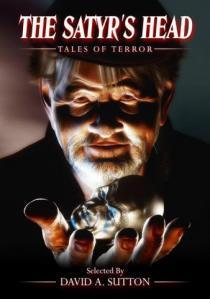David A. Riley's Blog, page 119
June 12, 2012
The Screaming Book of Horror
There's a new link to The Screaming Book of Horror.
 Contents are:
Contents are:
Larva – John Brunner
The Swarm – Alison Littlewood
Natural Selection – Robin Ince
One of the Family – Bernard Taylor
What Shall We Do About Barker? – Reginald Oliver
Cut! – Anna Taborska
Old Grudge Ender – David A. Riley
Bird Doll – Claire Massey
The Christmas Toys – Paul Finch
The Quixote Candidate – Rhys Hughes
Helping Mummy – Kate Farell
The Iron Cross – Craig Herbertson
The Baby Trap – Janine Wood
Sometimes You Think You Are Alone – Alison Moore
The Tip Run – Johnny Mains
Christenings Can Be Dangerous – John Llewellyn Probert
Jack and Jill – Steve Rasnic Tem
The City of Plenty – Alex Miles
Imagination – Chris Fowler
The Blackshore Dreamer – John Burke

 Contents are:
Contents are:Larva – John Brunner
The Swarm – Alison Littlewood
Natural Selection – Robin Ince
One of the Family – Bernard Taylor
What Shall We Do About Barker? – Reginald Oliver
Cut! – Anna Taborska
Old Grudge Ender – David A. Riley
Bird Doll – Claire Massey
The Christmas Toys – Paul Finch
The Quixote Candidate – Rhys Hughes
Helping Mummy – Kate Farell
The Iron Cross – Craig Herbertson
The Baby Trap – Janine Wood
Sometimes You Think You Are Alone – Alison Moore
The Tip Run – Johnny Mains
Christenings Can Be Dangerous – John Llewellyn Probert
Jack and Jill – Steve Rasnic Tem
The City of Plenty – Alex Miles
Imagination – Chris Fowler
The Blackshore Dreamer – John Burke
Published on June 12, 2012 04:02
June 11, 2012
Snow White and the Huntsman
While we had our day out at the Lowry, we also watched Snow White and the Huntsman, a brilliantly conceived alternative to the Disney classic. The sets were incredibly realistic, especially the castles, while the dark forest was as atmospherically ominous as any I have ever seen. The storyline created a much more adult plot, helped along by some great acting. I was especially interested to see the dwarfs, played by such iconic actors as Bob Hoskins, Ray Winstone, Ian McShane, Nick Frost and Toby Jones and others. The best dwarfs since The Time Bandits, even though none of these actors is an actual dwarf! The CGI special effects were for once excellent, especially the troll, and helped to create a special sort of dark fairytale realism.
Charlize Theron, as the wicked queen Ravenna, was especially well cast, at once beautiful, cold and stunningly evil.
Although there were quite a few young children in the audience when we watched this film, it is perhaps a testimony to how good it was that they stayed virtually silent throughout.
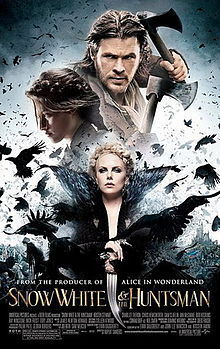

Charlize Theron, as the wicked queen Ravenna, was especially well cast, at once beautiful, cold and stunningly evil.
Although there were quite a few young children in the audience when we watched this film, it is perhaps a testimony to how good it was that they stayed virtually silent throughout.

Published on June 11, 2012 08:45
Prometheus
Went to see this at the Vue cinema, the Lowry Centre, Salford on Friday. I had been looking forward to watching this for some time and, gladly, was not disappointed. It definitely lived up to my expectations, with some superb special effects, solid acting and a well written script, which answered some questions about the whole Alien mythology, but intriguingly created many more.
Perhaps only Ridley Scott could have come back and created a prequel to Alien as good as this.
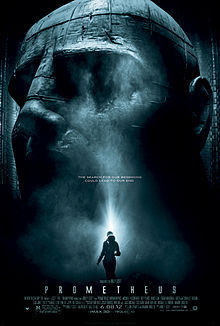

Perhaps only Ridley Scott could have come back and created a prequel to Alien as good as this.

Published on June 11, 2012 08:36
Horror! The Darkness and Horror! Under the Tombstone
I have just heard from Dave Sutton that he will be reprinting the anthologies New Writings in Horror and the Supernatural volumes 1 and 2, originally published by Sphere Books in 1971 and 1972. These included my stories The Farmhouse and A Bottle of Spirits.
The Farmhouse will now be republished in Horror! Under the Tombstone, and A Bottle of Spirits will be in Horror! The Darkness.
The Farmhouse will now be republished in Horror! Under the Tombstone, and A Bottle of Spirits will be in Horror! The Darkness.
Published on June 11, 2012 03:05
June 9, 2012
Screaming Book of Horror
Steve Upham and Johnny Mains have created a special facebook page for
The Screaming Book of Horror
.
Published on June 09, 2012 09:55
June 7, 2012
The Screaming Book of Horror edited by Johnny Mains
Johnny Mains has just issued a list of the contributors so far (I believe there are still two more stories to be included):
Larva – John Brunner
The Swarm – Alison Littlewood
Natural Selection – Robin Ince
One of the Family – Bernard Taylor
What Shall We Do About Barker? – Reginald Oliver
Cut! – Anna Taborska
Old Grudge Ender – David A. Riley
Bird Doll – Claire Massey
The Christmas Toys – Paul Finch
The Quixote Candidate – Rhys Hughes
Helping Mummy – Kate Farell
The Iron Cross – Craig Herbertson
The Baby Trap – Janine Wood
Sometimes You Think You Are Alone – Alison Moore
The Tip Run – Johnny Mains
Christenings Can Be Dangerous – John Llewellyn Probert
Jack and Jill – Steve Rasnic Tem
The Blackshore Dreamer – John Burke
[image error]
Larva – John Brunner
The Swarm – Alison Littlewood
Natural Selection – Robin Ince
One of the Family – Bernard Taylor
What Shall We Do About Barker? – Reginald Oliver
Cut! – Anna Taborska
Old Grudge Ender – David A. Riley
Bird Doll – Claire Massey
The Christmas Toys – Paul Finch
The Quixote Candidate – Rhys Hughes
Helping Mummy – Kate Farell
The Iron Cross – Craig Herbertson
The Baby Trap – Janine Wood
Sometimes You Think You Are Alone – Alison Moore
The Tip Run – Johnny Mains
Christenings Can Be Dangerous – John Llewellyn Probert
Jack and Jill – Steve Rasnic Tem
The Blackshore Dreamer – John Burke
[image error]
Published on June 07, 2012 03:07
May 30, 2012
The Satyr's Head: Tales of Terror
Published on May 30, 2012 12:59
May 23, 2012
The Best Horror Stories of Karl Edward Wagner
I have just ordered the two-volume set, Best Horror Stories of Karl Edward Wagner: Where the Summer Ends, Volume 1; and Walk on the Wild Side, Volume 2, published by Centipede Press.
These should arrive early next week according to Amazon.
Karl was one of the best horror writers ever, though his Kane stories are some of the most outstanding novels in the annals of heroic fantasy fiction.
Volume 2 of Best Horror contains a special story for me. Gremlins was originally published in the first issue of Beyond, which my wife and I edited in 1995. Karl was the first writer I wrote to for a story for the magazine and the one I was more eager than any other to have in it. My hope was that he would become a regular contributor. That wasn't to be. Plans for Beyond were started in 1994, which was when Karl mailed the story to me. I met him later that year at Fantasycon where we talked about the magazine, which was scheduled to be published the following year. Sadly, less than a month after meeting him Karl died. Gremlin appeared in our first issue, which we dedicated to him.
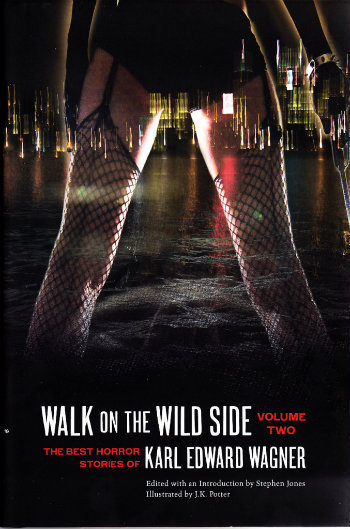


These should arrive early next week according to Amazon.
Karl was one of the best horror writers ever, though his Kane stories are some of the most outstanding novels in the annals of heroic fantasy fiction.
Volume 2 of Best Horror contains a special story for me. Gremlins was originally published in the first issue of Beyond, which my wife and I edited in 1995. Karl was the first writer I wrote to for a story for the magazine and the one I was more eager than any other to have in it. My hope was that he would become a regular contributor. That wasn't to be. Plans for Beyond were started in 1994, which was when Karl mailed the story to me. I met him later that year at Fantasycon where we talked about the magazine, which was scheduled to be published the following year. Sadly, less than a month after meeting him Karl died. Gremlin appeared in our first issue, which we dedicated to him.


Published on May 23, 2012 01:09
May 21, 2012
Eyes to See by Joseph Nassise
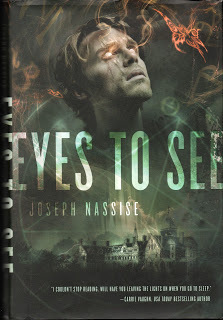
EYES TO SEE by Joseph NassiseTOR Books, 2011318 pages
This is the first in a series of novels about a new occult hero, Jeremiah Hunt. Though set in the modern world, it is a world where ghosts, witches, demons and shapeshifters proliferate, unseen by the bulk of humanity. It could be our world, of course, because until Hunt takes part in a ceremony to enable him to “see that which is unseen” he is as unaware as the rest of us of its existence. This ceremony, part of his desperate bid to find his abducted daughter, has far reaching results. While it enables him to see the spirit world, in particular ghosts, at the same time his normal ability to see is destroyed. Burned out by visions of the full scope of reality, his eyes are blind in normal light and can only see in pitch darkness or via the eyes of ghosts.
Still searching for his daughter, Hunt is occasionally consulted by a local Boston police detective for his “psychic” abilities. The cases he becomes involved with eventually centre on a series of bizarre brutal murders which, piece by piece, he comes to realise have a bearing on the unknown fate of his daughter. In his search he finds help from two unlikely sources, a young, talented witch, a worshipper of Gaia, and a huge Russian bar-owner with frightening abilities of his own. What they are up against, though, makes even their combined abilities seem puny by comparison. It’s an ancient evil, stretching back into America’s distant colonial past, which is manipulating Hunt without him realising how he is being used and bringing him closer to an horrific fate.
Fast paced, with plenty of twists and turns in its storyline, this is an accomplished novel of supernatural evil, with tenuous links to the author’s other series of occult novels involving modern Knights Templars. Jeremiah Hunt is a credible hero, deeply flawed but determined. It is a dark urban fantasy of the darkest, most horrific kind.
Published on May 21, 2012 01:10
May 18, 2012
Paperback Fanatic issue 22

The latest issue of the Paperback Fanatic arrived in the post today. This digest-sized 86-page publication contains a wealth of fascinating information and some astounding full colour illustrations. The main attraction for me this time is an article on two very different but truly iconic British horror writers, Charles Birkin and R. Chetwynd-Hayes, including reproductions of most of their paperback book covers. Not far beind is a history of two major SF magazines from the 60s and 70s, Galaxy and If, with some fascinating behind the scenes details of their ups and downs and eventual closure under editors Horace Gold (who famously rejected Flowers for Algernon because writer Daniel Keye wouldn't change the ending to a happier one), Frederick Pohl, Ejler Jakobsson, Jim Baen, and finally Hank Stine.
Other articles which I haven't yet had chance to read are the early pulps of future best-seller Martin Cruz Smith, Confessions of a Sex Researcher and Robert Bloch covers, together with regular features.
Well worth every penny.
Published on May 18, 2012 12:34

